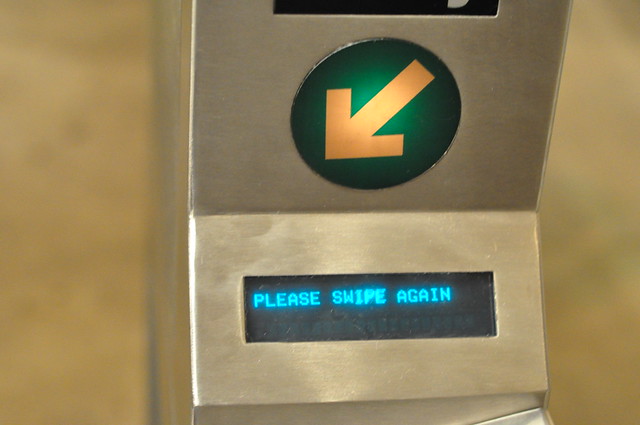
Project opponents believe the 34th St. Transitway will blight the area. (Image via NYC DOT)
Since early 2008, New York City has been working its way toward implementing a true Transitway along 34th St. The city’s plan would include all of the trappings of Select Bus Service — dedicated and physically separated lanes, pre-board fare payment, etc. — and an elimination of two-way traffic along the thoroughfare. This heaven for pedestrians and transit would provide for higher-speed connections to, from east to west, the 6, N, R, Q, B, D, F, M, 1, 2, 3, A, C and E trains as well as a stop at Penn Station. Who could argue against it?
Well, as the Stop the 34th Street Transit website makes abundantly clear, the Murray Hill Neighborhood Association thinks these upgrades are the devil incarnate. Powered by people who are mostly irate over the fact that taxis won’t be able to drop them off directly in front of their apartments, these wealthy residents have couched their opposition to the Transitway in faux-populist terms. They claim that a “wall of buses” that operate at “rapid” speeds will “create safety issues for young children.” They claim the Transitway will “clog small streets with traffic.” They claim noise and air pollution levels will increase. They ignore the reality that pedestrians will find 34th St. far friendlier with the Transitway than without.
My favorite argument is one of blight. Saying that they’d prefer elevated train lines because they “had the courtesy of being above street level,” the Transitway opponents claim that the bus lane improvements “risk re-creating the old els’ blight, depressing home values and the viability of local businesses.” Even though the NYC DOC is aware of the more legitimate concerns, Murray Hill will not be easily swayed.
It’s easy to mock these folks not brave enough to put their names on their critiques for their windshield/NIMBYism perspectives, but as Streetsblog notes, those who support this project have to take these opponents seriously. CB4 on the West Side supports the project while CB 6 on the East Side isn’t a fan. Thus, proponents of better bus transit need to convince CB 5 that this is a worthwhile project, and at 6 p.m. today at the YMCA on 14th St., that vital community board is hosting an open house.
With this Transitway, bus speeds will increase by 20-35 percent depending upon the time of day, and the city is prepared to ensure adequate curbside access. Traffic will be calmed, and the area will become more accessible. Streetsblog’s Ben Fried sums up the benefits:
Passengers on 34th Street currently travel at an average 4.5 mph in regular curbside bus lanes. The transitway project can set a major precedent, establishing the city’s first physically separated bus lanes and speeding up the tens of thousands of daily bus trips on 34th Street. New curb extensions, pedestrian medians, and, potentially, public plazas would transform the corridor and transfer large swaths of space from traffic to people.
So if you have a chance tonight, go to the YMCA at 125 West 14th Street at 6 p.m. and make your voices heard. After all, in the area around the proposed Transitway, 86 percent of workers commute by transit or their own two feet and 82 percent do not even own cars. We don’t want to see a vocal minority stop a vital transit project, and their spurious claims should not carry the day.


















